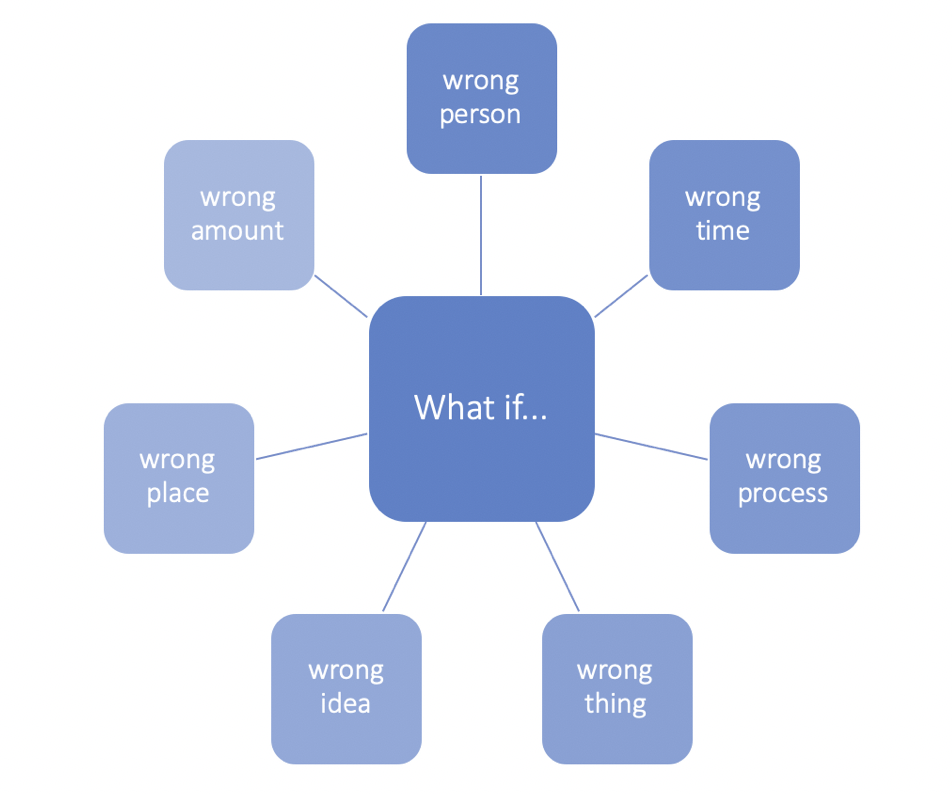The final validation steps provide a method for the evaluation of the completeness, correctness, and specificity of the set of indicators and corresponding mitigation actions defined in the last assessment phase. It aims to help assess the framework completion and to fine-tune it based on the stakeholders’ feedback.
The Structured What-If technique (SWIFT) makes use of the stakeholders’ engagement. It is a flexible, high-level risk identification technique that can be used on a standalone basis, or as part of a staged approach to make more efficient use of bottom-up methods. The method is a structured brainstorming technique, using guidewords and prompts to identify the risks. It is a thorough, systematic, multi-disciplinary team-orientated analytical technique, which examines complete systems or subsystems.
Stage of adoption
- Ante-adoption
Roles
- Overseeing roles,
- Technical Roles,
- Engaging roles
Methodology
- Team: 15-20 stakeholders with different backgrounds
- Duration: 2 - 4 hours
- Materials: What-if matrix
Step-by-step preparation
-
Prepare the guidewords by preparing the guide rules according to the use case assessed;
-
Assemble the team (e.g., use case owner, stakeholders, final users) that will participate in the workshop;
-
Provide a background of the assessment – why is the risk assessment performed;
-
Inform the audience of the purpose of the presentation, stating the objectives and the intended benefits of the workshop;
-
Define requirements/the criteria for success;
-
Describe the system using both textual and graphical information
-
Identify risk through “What-if” questions;
-
Assess the identified risks using the likelihood and severity of each risk and evaluate the potential impact;
-
Propose and discuss actions to minimise the risks’ impact;
-
Review the process to determine if the SWIFT workshop has met the objectives or if more in-depth analysis is needed;
-
Document the full process and communicate the results of the workshop to the community;
-
If required, perform an additional in-depth risk assessment through other types of techniques, including quantitative ones, if possible.
During the brainstorming session, the team assesses the process using a form that, for each type of assessment, includes a set of what-if questions to be asked and for which the answers will be generated.
Example
The model aims to ensure complete coverage of all the various types of risks, failures or errors which are likely to result within the system being analysed. The “What-if?” questions are structured according to various question categories. It uses checklists or guidewords for different questions asked to further strengthen the results.
The result of the SWIFT is very dependent on participants’ knowledge of the systems and processes being assessed. Therefore, it is important to include all stakeholder groups and those with the most intimate knowledge of the system or process being assessed (including the frontline workers).
After the analysis is completed, the team analyses if the SWIFT workshop achieved its objectives and was completed successfully, or if a more detailed risk assessment is required for some parts of the process (e.g., more detailed or quantitative techniques to complete the process).
The use case owner will generate a summary with the details of the brainstorming session, including the major findings and recommendations of the discussions. This summary could also serve as a base for further fine-tuning and improvement of the initial framework proposed.


